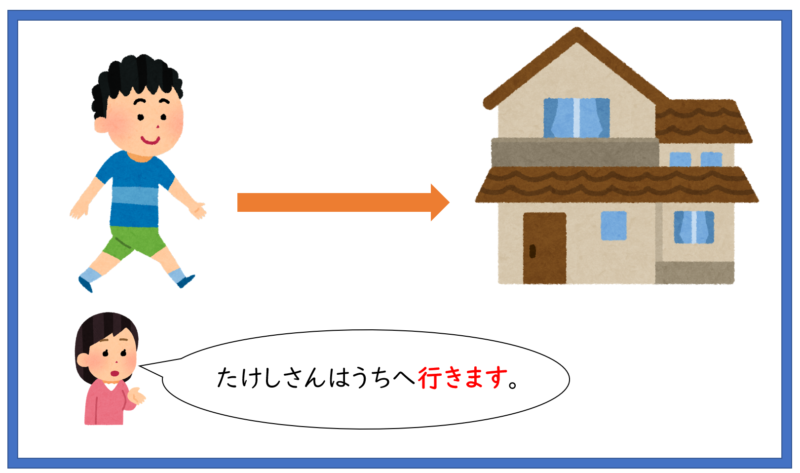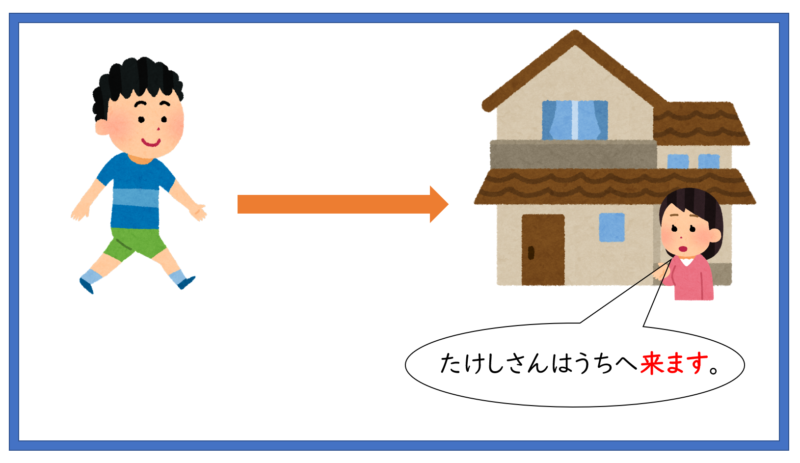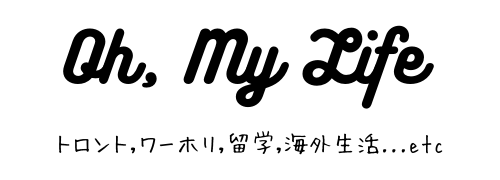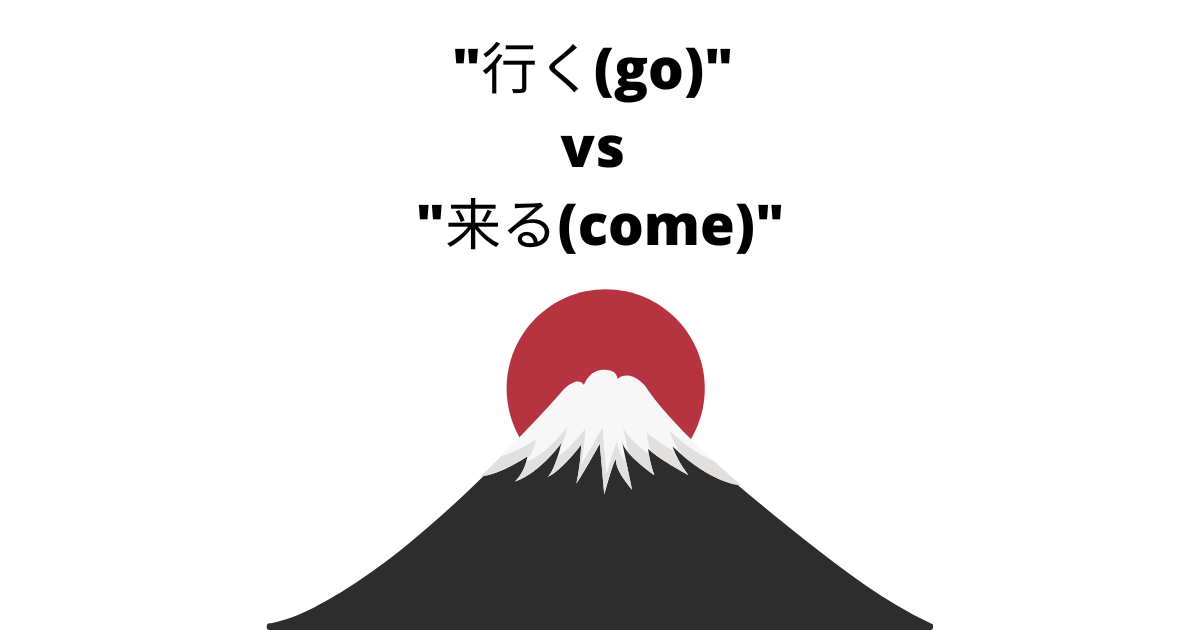The Japanese language is famous (may be infamous) as one of the most difficult languages to learn as a second language. It contains 3 different types of letters, complex conjugations, casual and polite forms, etc. The first hurdle that many Japanese language learners have to get over is “行く(go)” and “来る(come)”. If your mother tongue is English, the concept of “行く(go)” and “来る(come)” must be confusing. In this article, you can learn how to use “行く(go)” and “来る(come)”.
First off, let’s think about a situation where you are doing homework at your room while your mom is cooking downstairs.
In English;
Mom: Dinner is ready!
You: I am coming!
In Japanese;
Mom: Dinner is ready! (ご飯ができました!)
You: I am going!(行きます!)
Japanese people never say “I am coming (来ます)” in this situation. In Japanese, “行く” and “来る” are chosen based on where the speaker is. Let me explain each concept of the two verbs.
行きます(いきます)

As the picture describes, “行く” is used when a person/thing is leaving from the speaker.
来ます(きます)

On the other hand, “来る” is used when a person/thing is approaching where the speaker is.
Considering the meanings of “行く” and “来る” and looking at the two sentences below, it may be easier for your to understand the difference between them.
私は日本へ行きました。
私は日本へ来ました。
“私は日本へ行きました。” implies you are outside Japan. Meanwhile, “私は日本へ来ました。” tells the listener that you are in Japan.
Here is a tricky thing. Some learners might say “私は日本へ来ます。”. However, it sounds not right, because “私は日本へ来ます。” seems future tense. Following the rule of “来る” explained above, you are supposed to be in Japan when you use “来る”. That means you need to have completed the action, “来る”. Therefore, you should say “私は日本へ来ました。”, past tense is correct.
The last part could be confusing, but hope this article helps you understand the difference between “行く” and “来る”.
Enjoy learning Japanese!





















